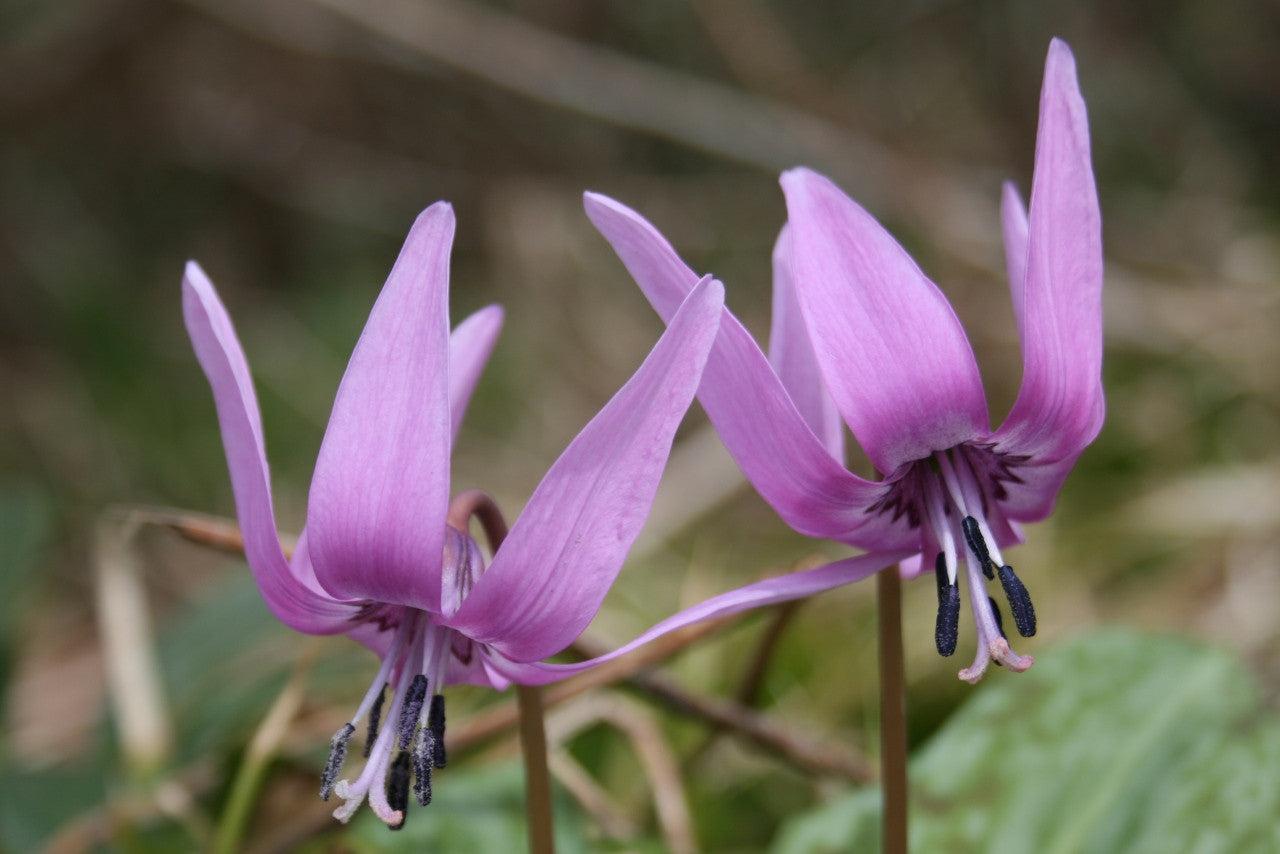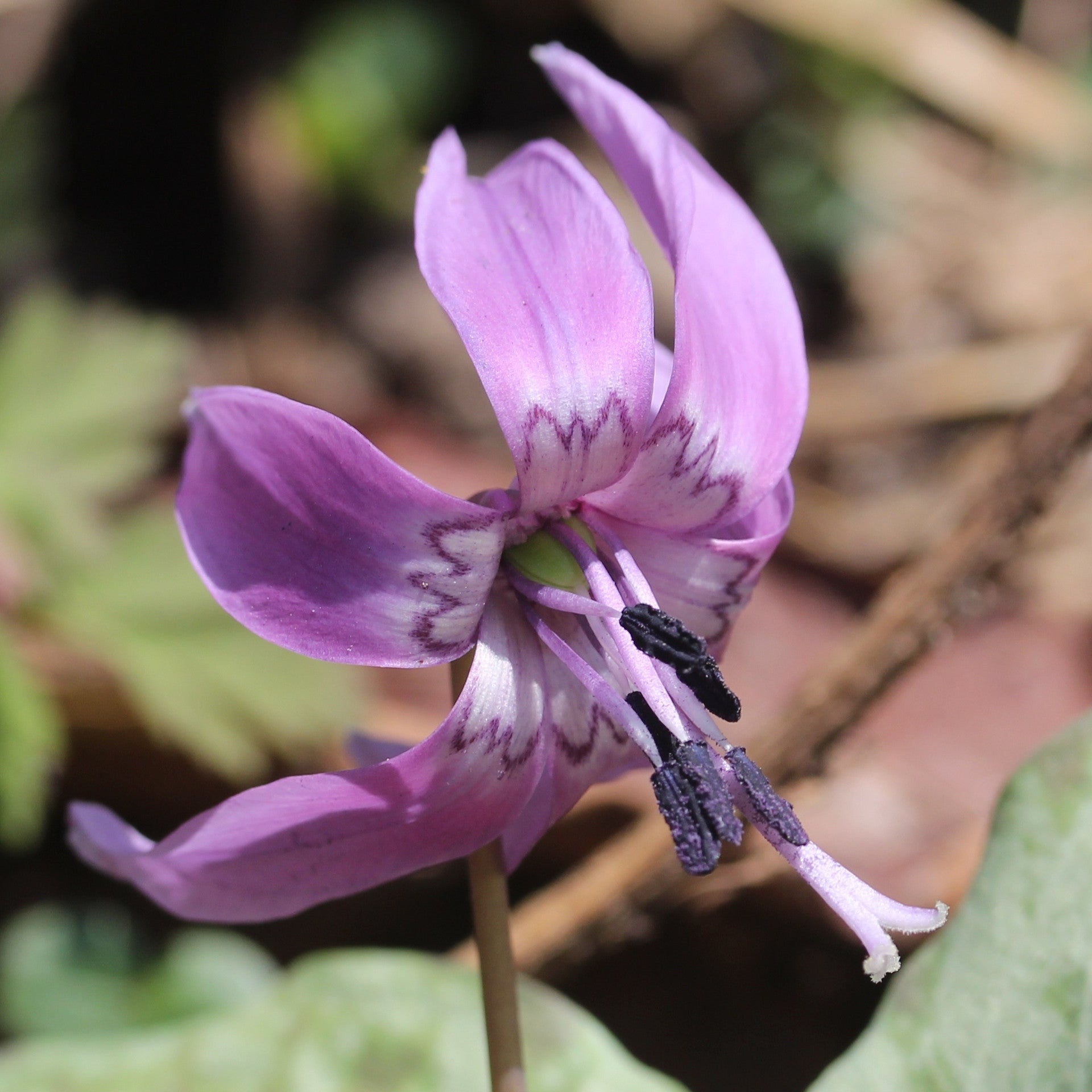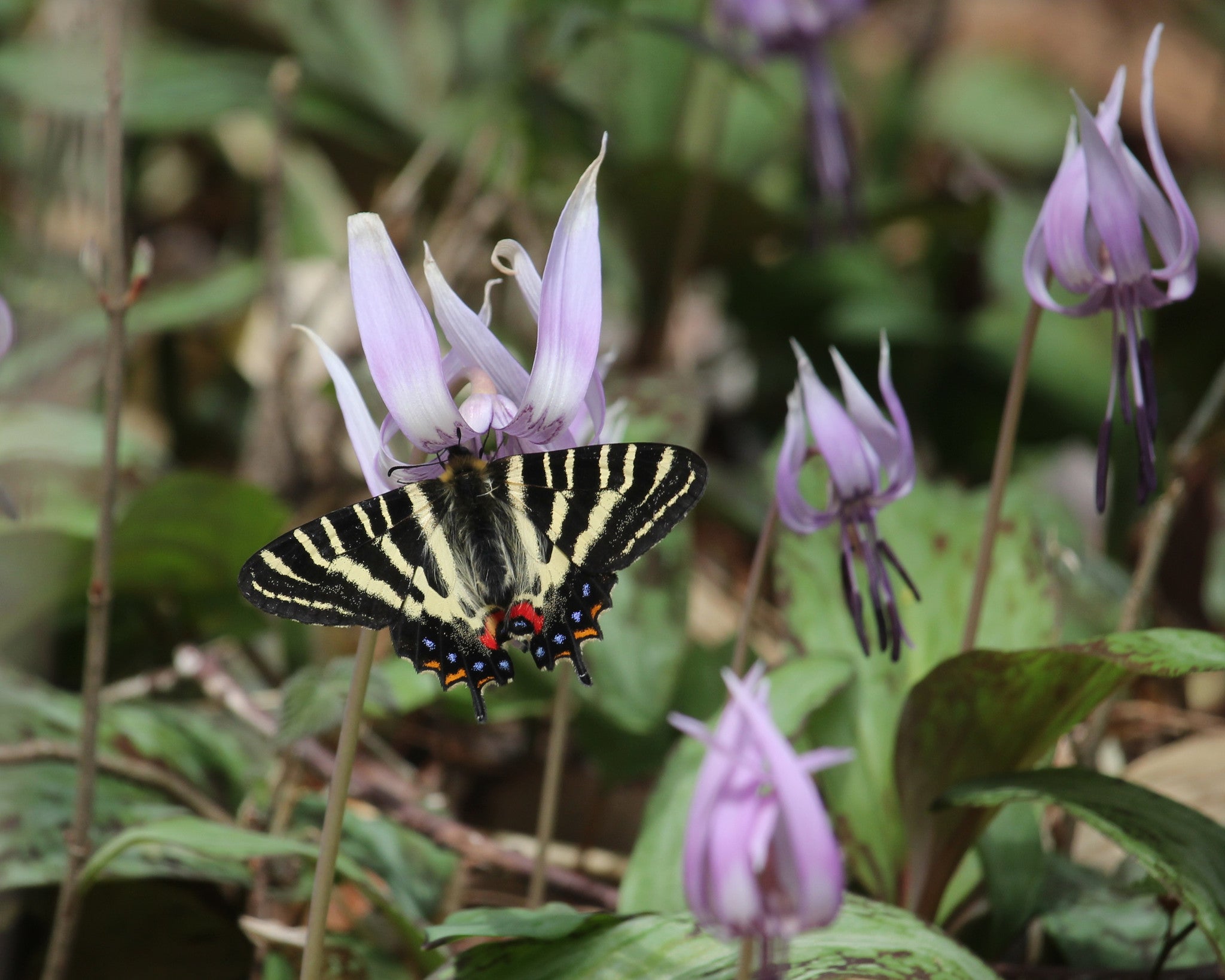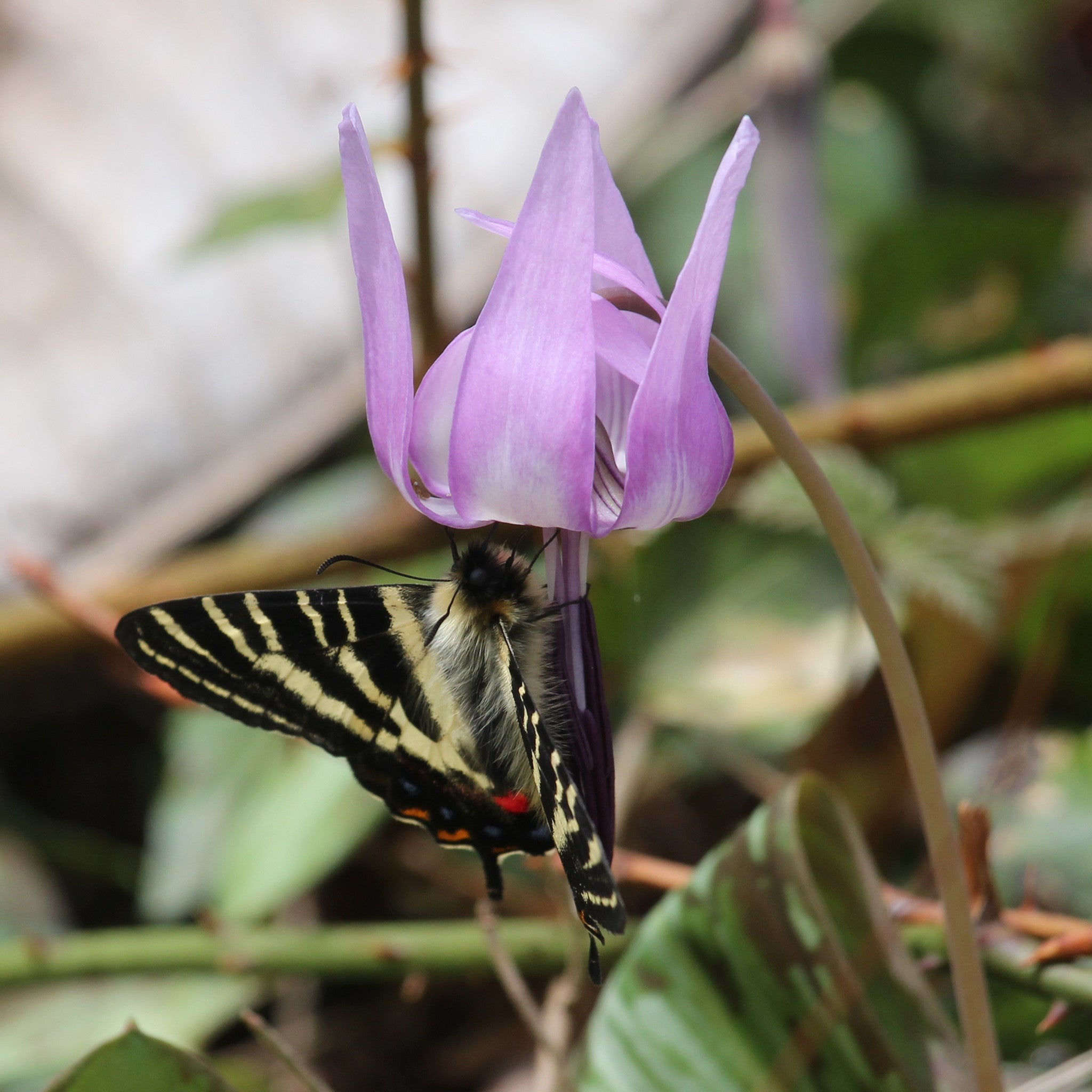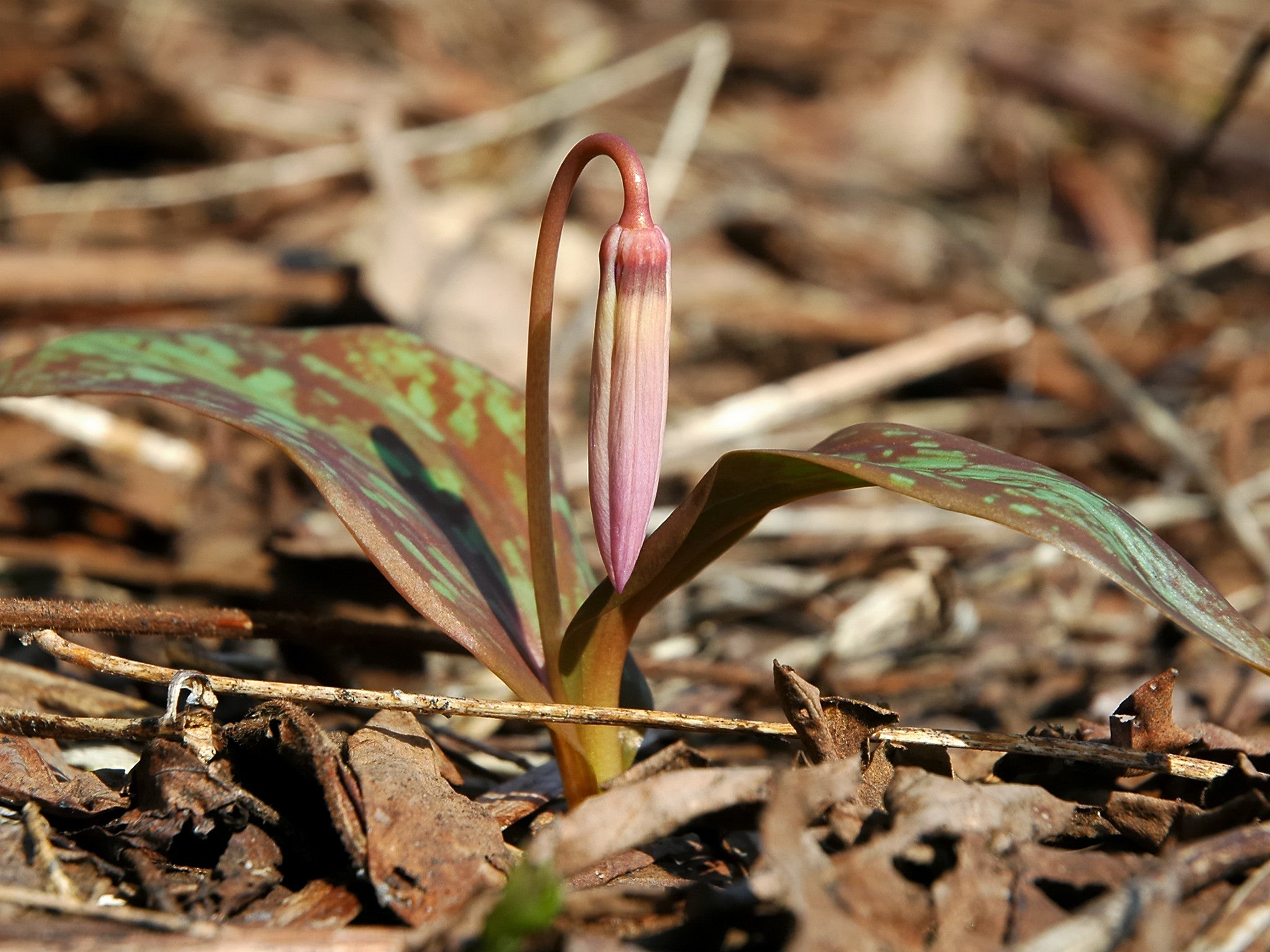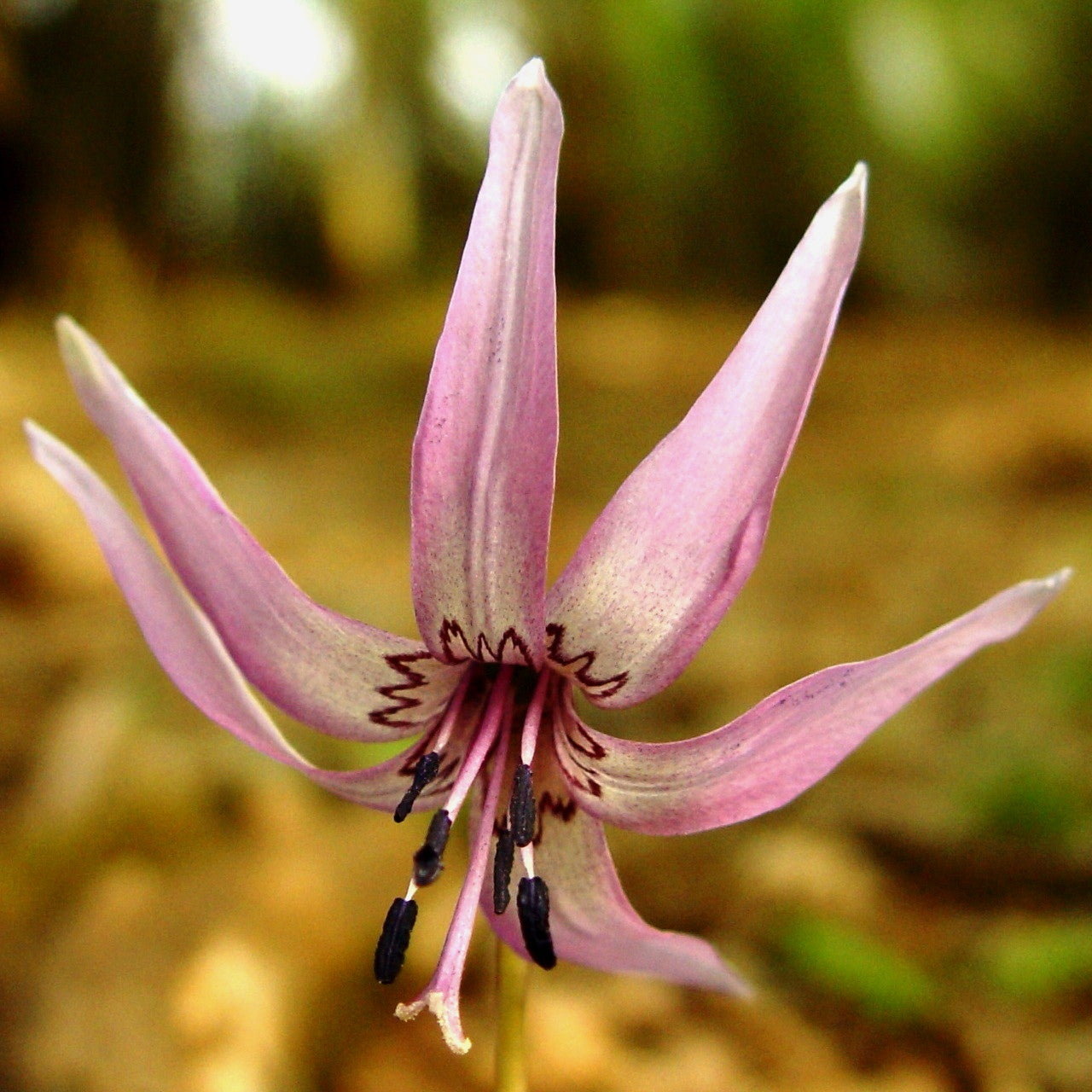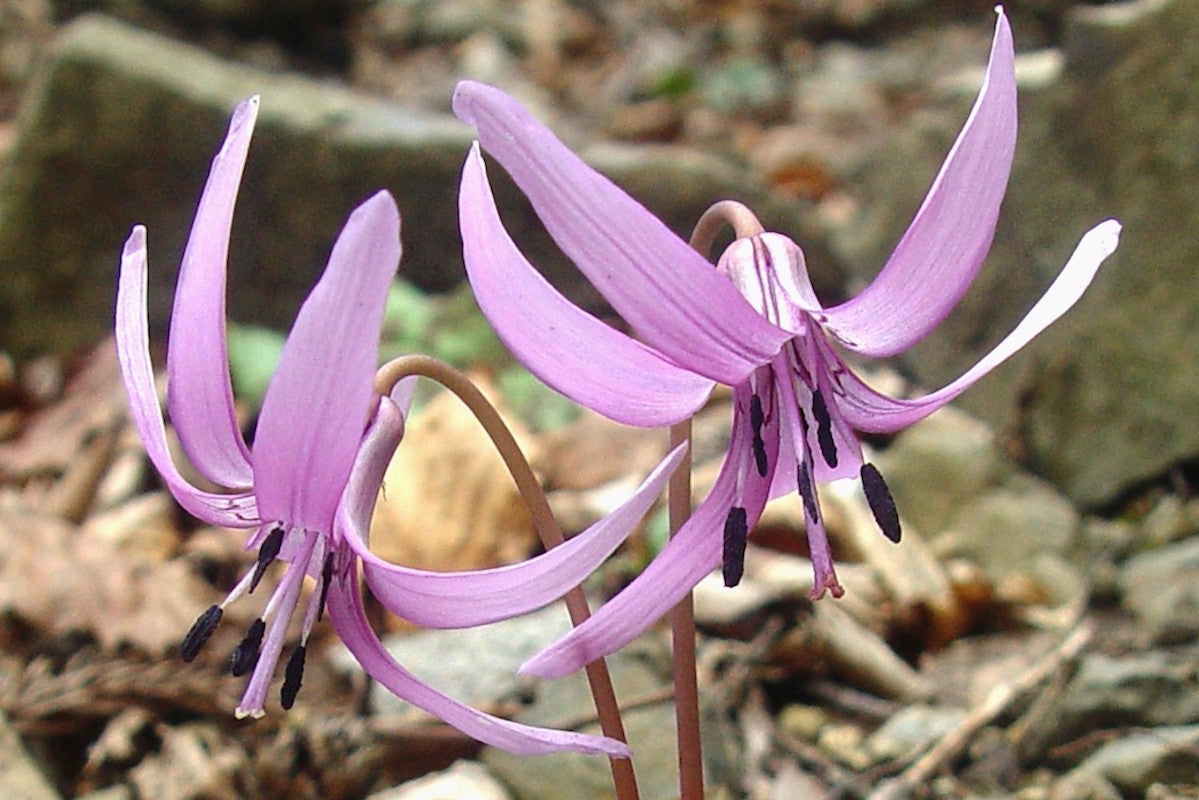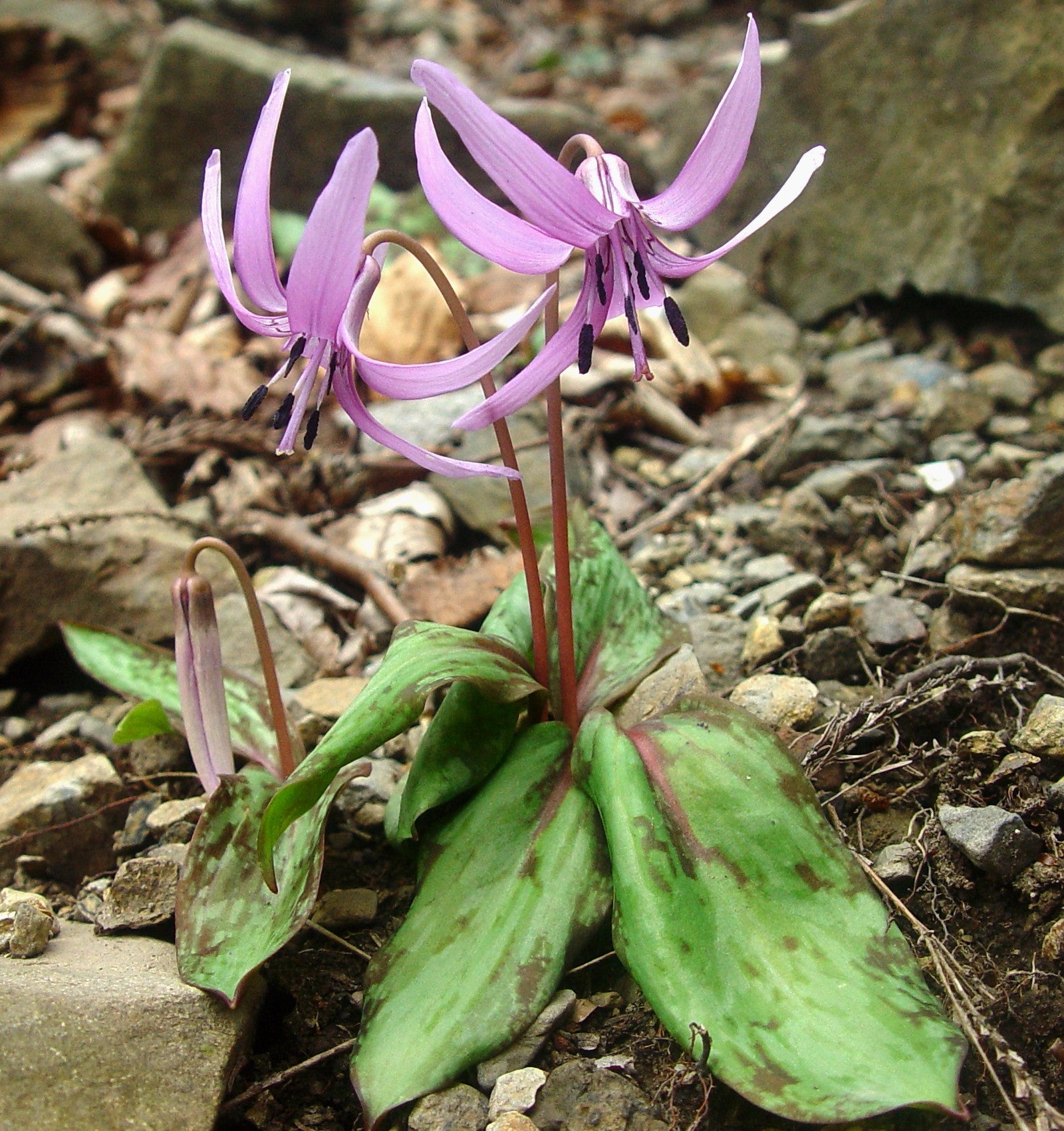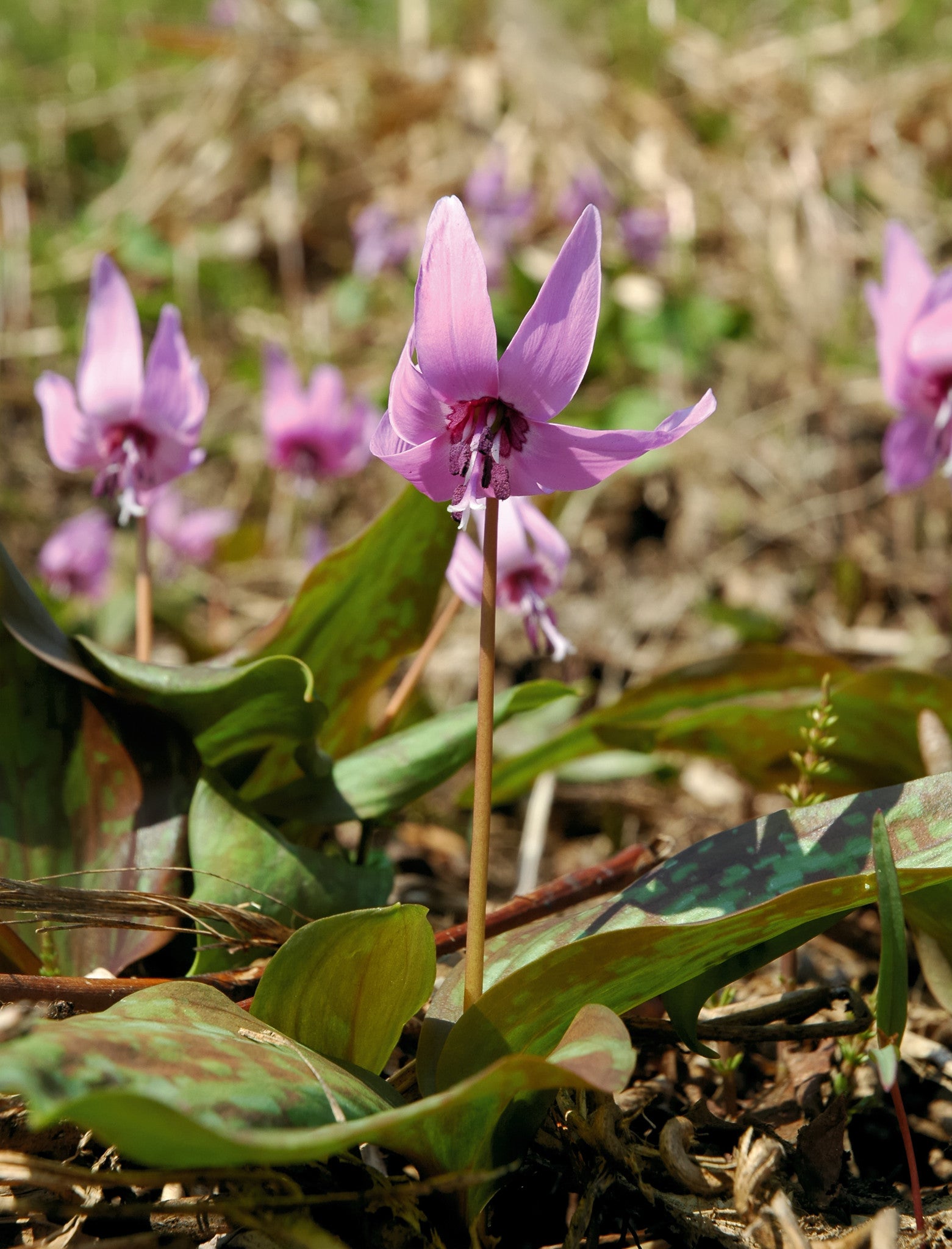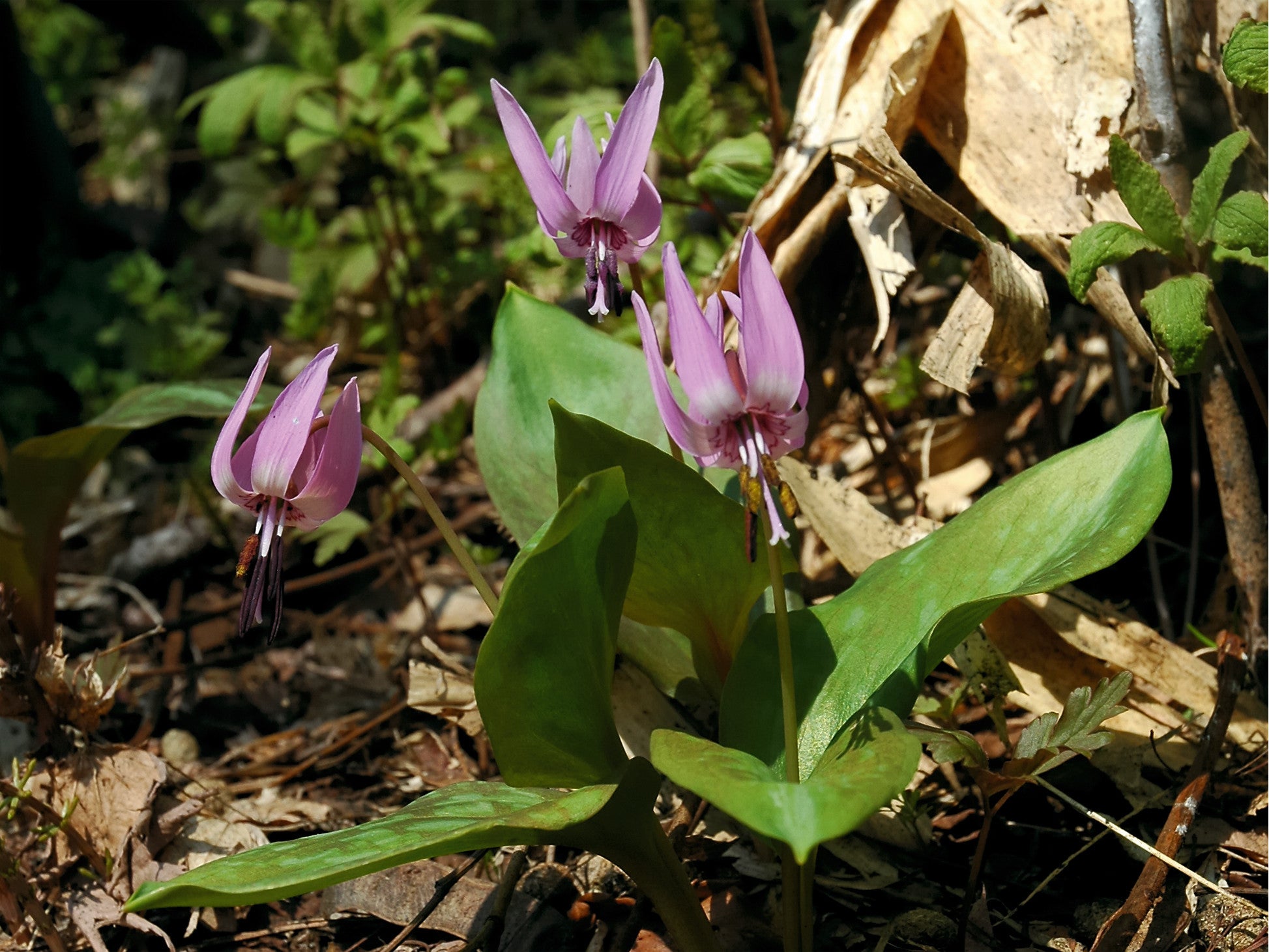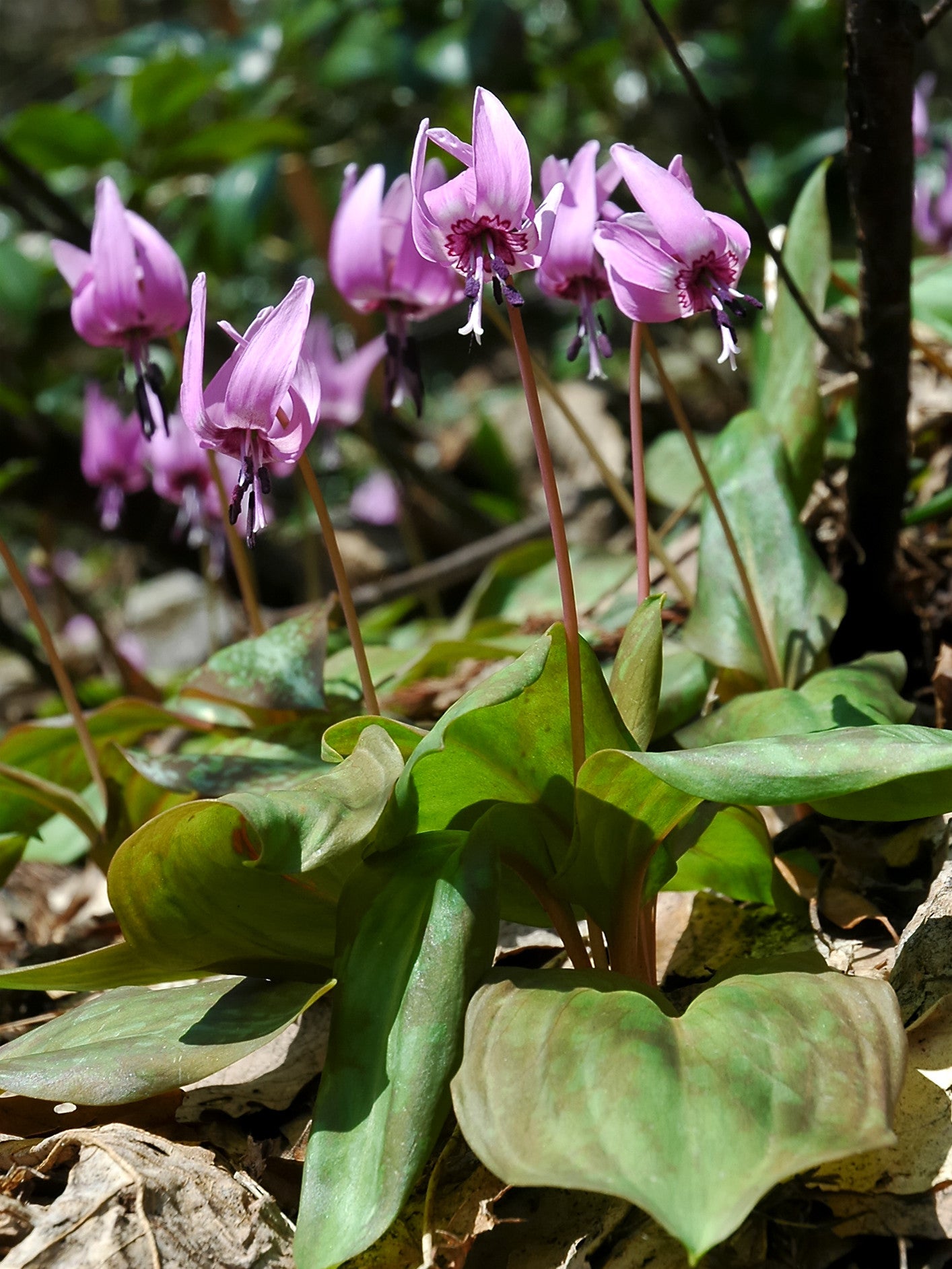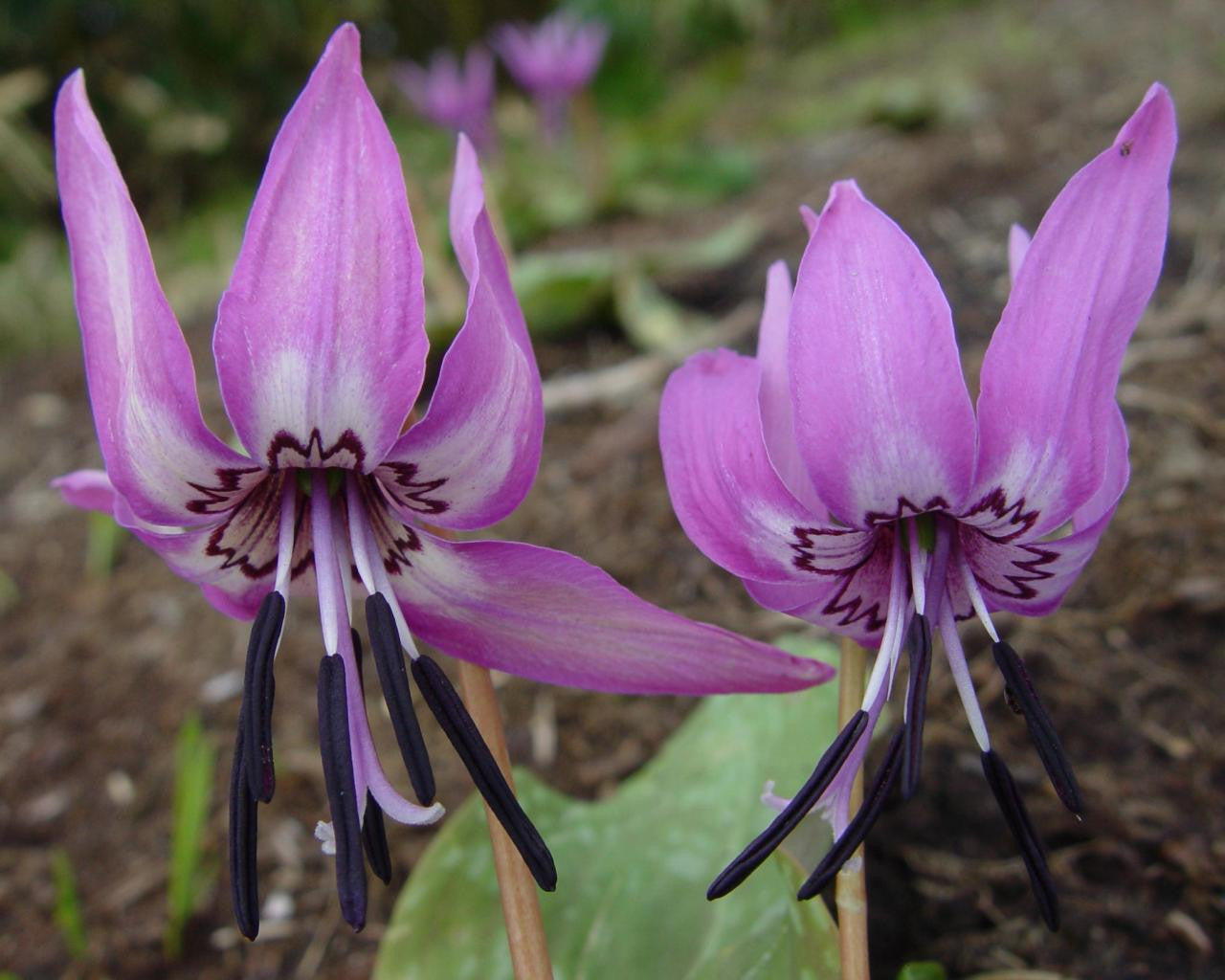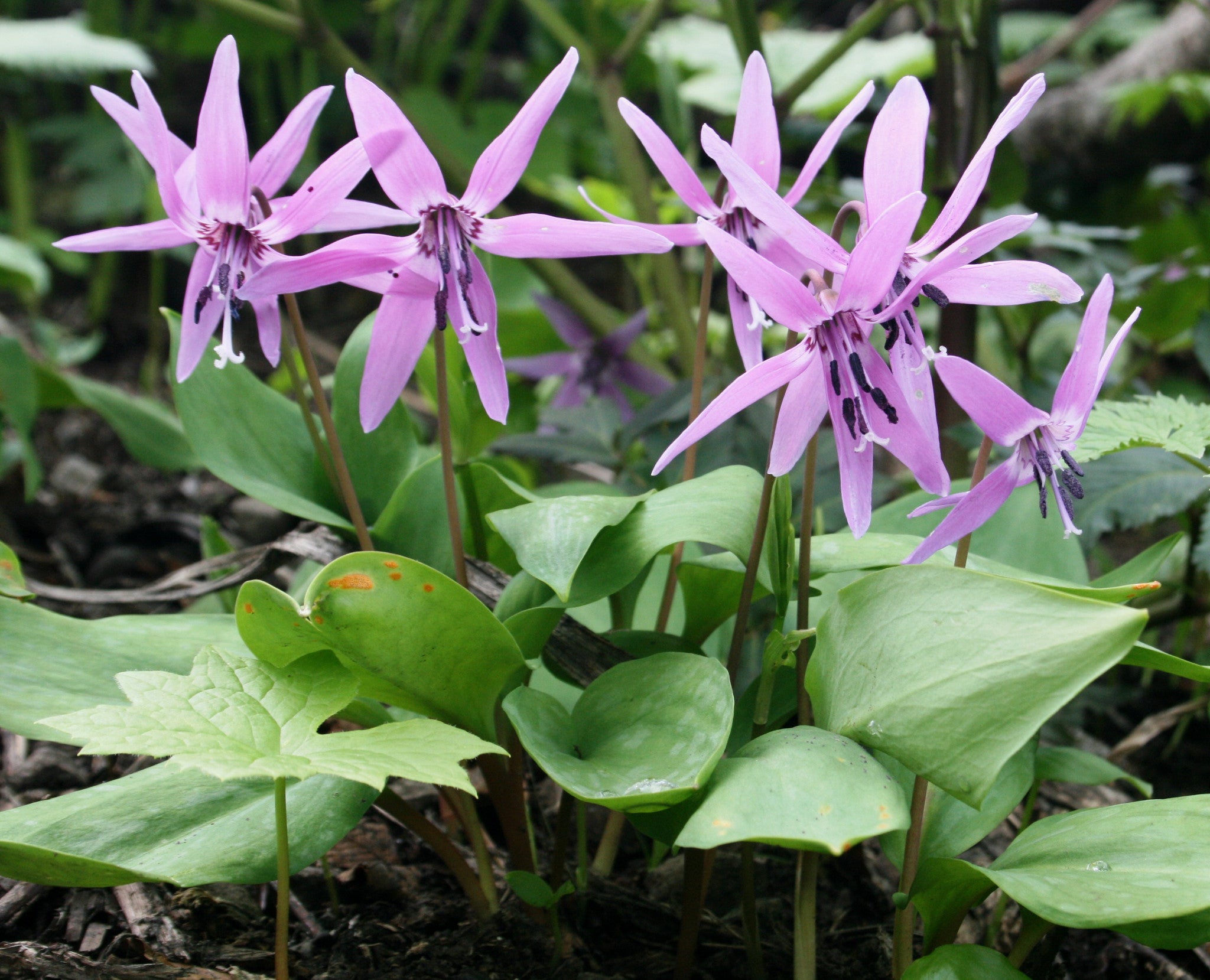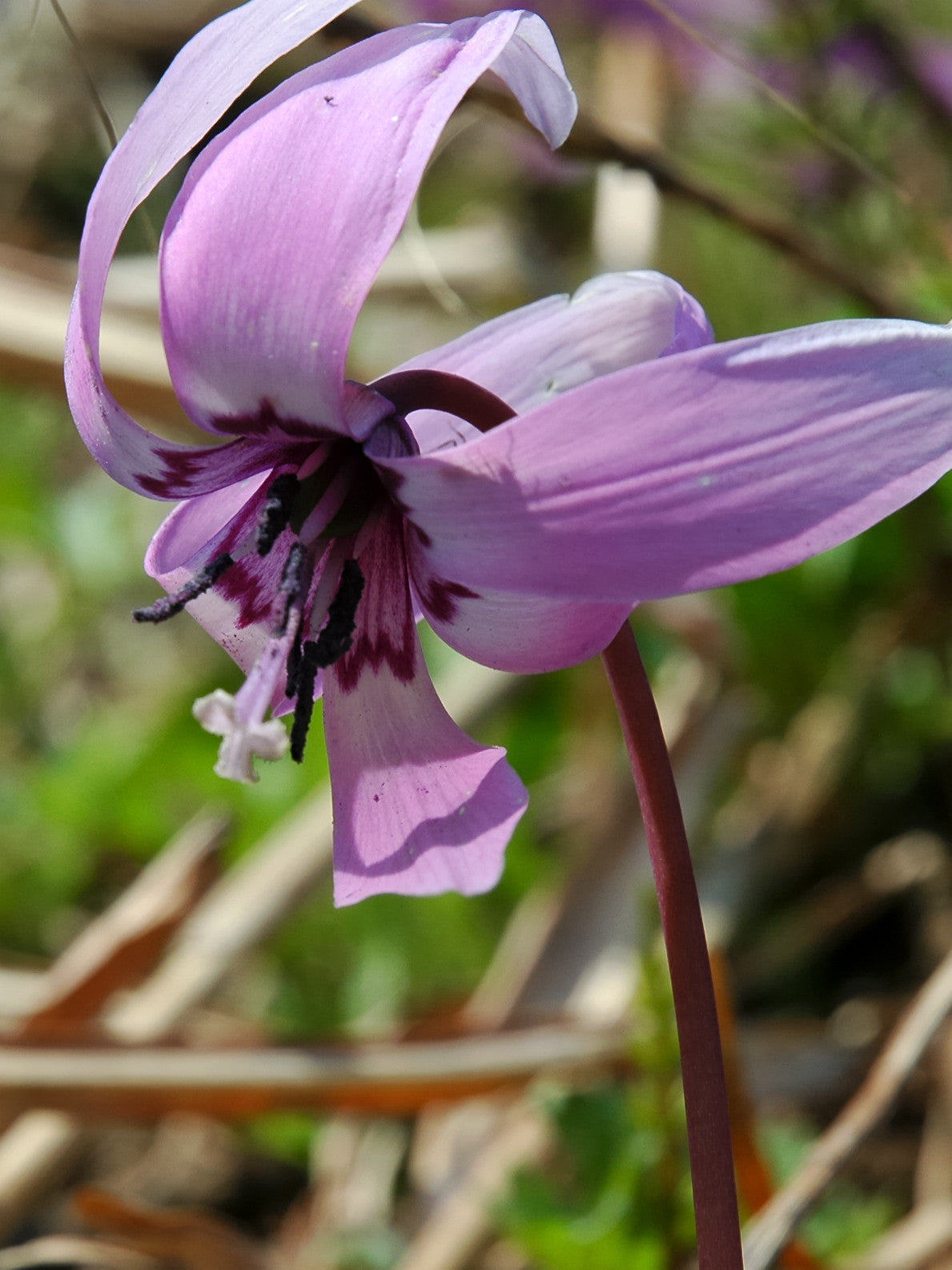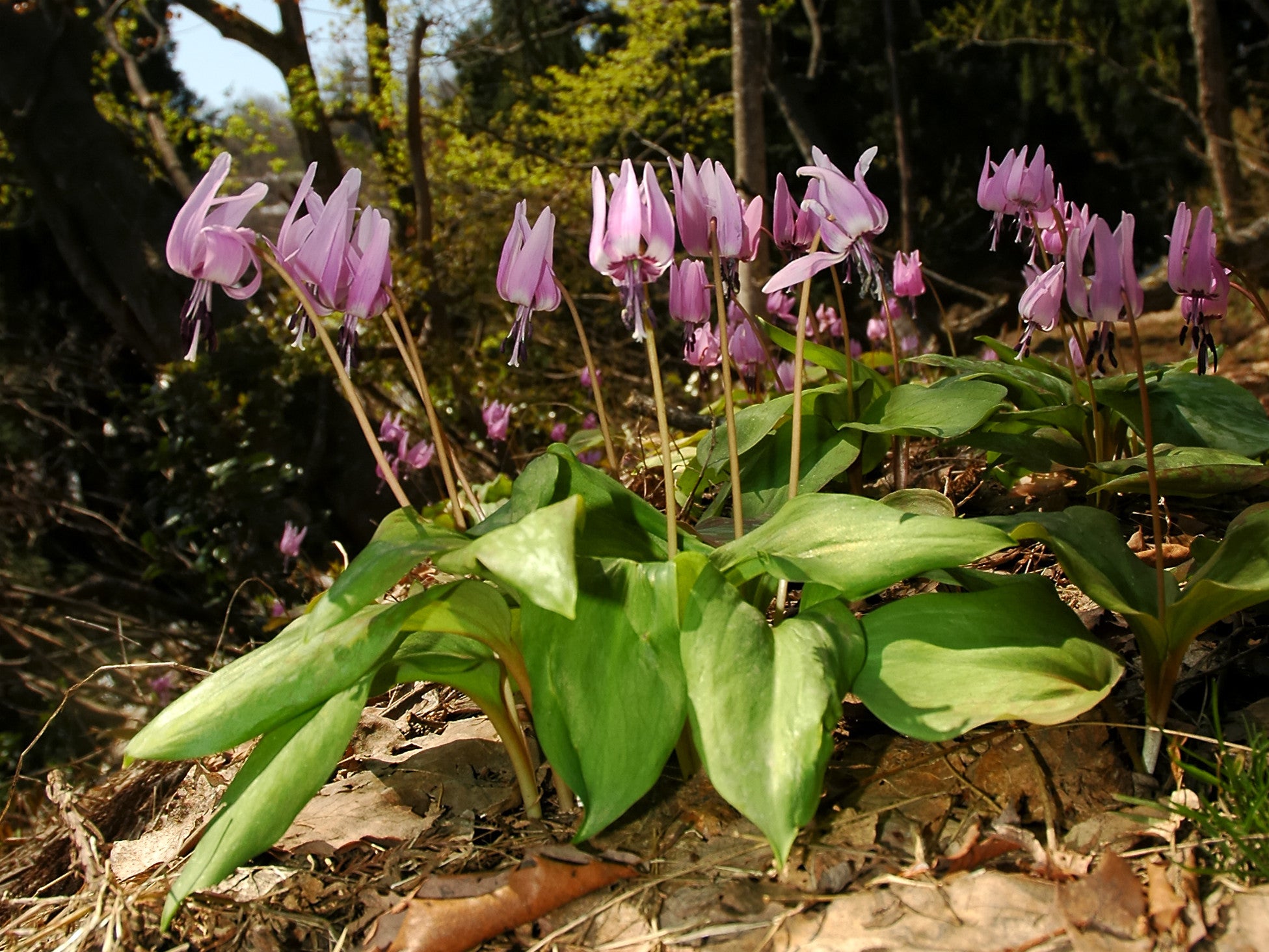Erythronium japonicum
Approx. 0.5 litre pot
About this cultivar:
Erythronium japonicum, known as Katakuri in Japan, is a pink-flowered species of trout lily, belonging to the Lily family and native to Japan, Korea, the Russian Far East, and China. Applying the generic common name trout lily may be somewhat of a misnomer, because in this Japanese species, the individual plant may or may not exhibit the flecked dark markings on the leaves, which is emblematic of that common name.
Reporting is mixed on whether it should be regarded as endangered in Japan, but quite often it is illegally poached from the wild by plant collectors looking to save a few yen. I don't blame them mind you, it is a beauty!
- Position: Full sun, partial shade
- Soil: Almost any soil, grows well in Ballyrobert
- Flowers: April, May
- Other features: Grows well in Ballyrobert, Woodland Plant, Dappled Shade or Full Shade Loving
- Hardiness: Fully hardy - grows well in Ballyrobert!
- Habit: Clump forming
- Foliage: Deciduous
- Height: 10 - 25 cm (0.3 - 0.8 ft)
- Spread: 10 - 25 cm (0.3 - 0.8 ft)
- Time to full growth: 2 to 5 years
- Plant type: Herbaceous Perennial, bulb
- Colour: Green, pink
- Goes well with: Shade, woodland or below hedges.
About this genus:
Erythronium (er-ith-ro-ne-um) is a genus of about 20 species that are member of the lily family (Liliaceae). They have quite a few common names such as fawn lily, trout lily, dog's-tooth violet and adder's tongue. The Latin name comes from the Greek word for red, erythros. Erythronium bulbs have had various uses over time- some species are edible and apparently tasty, however other species are slightly toxic and have been used as a contraceptive and emetic. However we use them in the garden!
Well known as woodland type plants they prefer shaded areas and will grow in almost any soil that isn't too wet or too dry. They are also well known for their tongue-shaped leaves; some are mottled with brown or purple trout-like spots, others are dappled with fawn-like white spots and some are plain green. All are beautiful!
Most Erythronium flower in early spring and go summer dormant, so don't worry when they disappear in July. They don't like being moved, so give them at least 3 years in each spot before transplanting! Not sure about companion pants, we grow most of ours in woodland or below hedges!

